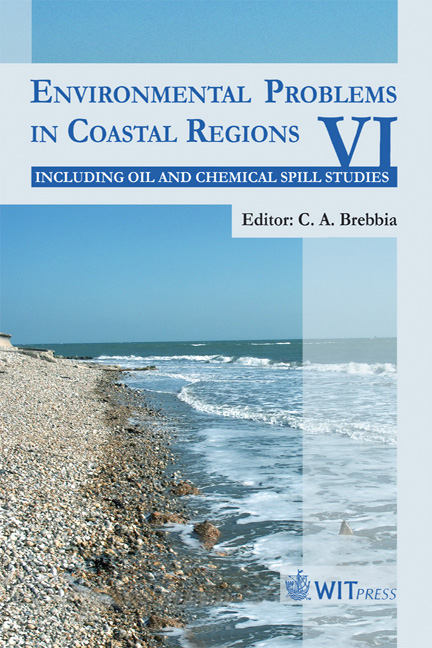Vulnerability Assessment Of The Port And Coastal Infrastructure Facilities Of TRINMAR, On The Gulf Of Paria, Trinidad, To Sea Level Rise
Price
Free (open access)
Transaction
Volume
88
Pages
11
Published
2006
Size
2,362 kb
Paper DOI
10.2495/CENV060441
Copyright
WIT Press
Author(s)
B. Singh, A. El Fouladi & K. Ramnath
Abstract
On account of the growth and expansions in the oil and gas sectors, TRINMAR, the marine arm of PETROTRIN, the state-owned oil and gas company of Trinidad and Tobago is required to move its port facilities from its current location at Point Fortin to a location 7 km south, namely Mont Pellier estate on Irois Bay in the Gulf of Paria. This paper addresses the vulnerability of the Mont Pellier site to rising sea levels, as caused by climate change. Sea level scenarios are created from the outputs of two coupled atmosphere-ocean geneneral ciculation models (A-OGCM’s), namely the Canadian (CGCM1) and British (HadCM3) models. Photogrammtric and field surveys are used to create a Digital Elevation Model (DEM) of the study area. Future scenarios of sea level rise over the short (2031), medium (2051) and long (2071) terms, coupled with estimations of accelerated erosion rates based on the Bruun principle, are then used to assess the vulnerability of the port and built infrastructure to future sea levels. In light of these vulnerability assessments, adaptation measures are proposed to minimise the impacts of future sea levels on the Mont Pellier port and harbour facilities. Keywords: climate change, sea level rise, impacts, vulnerability, coastal zone, port and harbour facilities. 1 Introduction The Petroleum Company of Trinidad and Tobago (PETROTRIN) proposes to relocate its Trinmar Marine Base to the Mont Pellier Estate which is 7 Km South
Keywords
climate change, sea level rise, impacts, vulnerability, coastal zone, port and harbour facilities.





